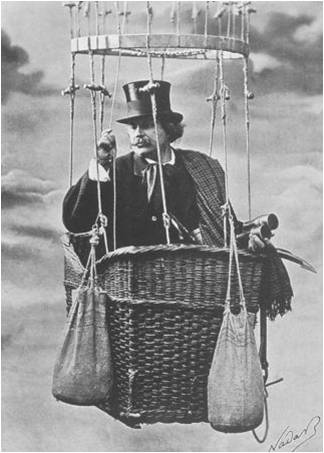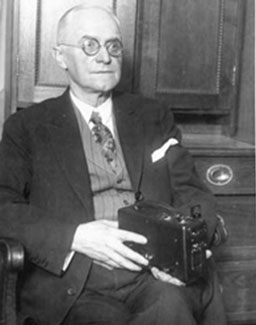
Gasper Felix Tournachon Nadar, who took aerial photos via hot air balloon.
Objective documentation by camera coincided with physical transformation of industrialized countries.
Images commissioned to show bridges and monuments, building of transportation facilities and roads. Reconstruction of Crystal Palace and Great Eastern steamship. Accurate record of engineering process. Old buildings scheduled for demolition photographed.
Hippolyte Bayard
Hippolyte Bayard made decorous views of streets and buildings in Paris. Joining of cross-continental tracks at Promontory Point. Those behind the cameras were guided in their selection and treatment of material both by a sense of being emissaries of a “higher civilization.”
Felix Nadar
Felix Nadar was born into a family of printer tradespeople and made photographs underground with artificial light. He was the first to photograph Paris from the air in a balloon.
“that instant of understanding that puts you in touch with the model.”

The Blind Violinist, Abony, Hungary, 1921. Andre Kertesz.
Wet collodion supplanted by dry plate - a silver-bromide gelatin emulsion available first on glass plates and later on lightweight flexible celluloid film.
Material easier to use and more sensitive to light, shortened exposure time and corrected for all colors of the spectrum except red and blue.
Camera designs flourished, faster lenses, shutters, exposure meters and flash equipment.
Standardization accelerated toward end of 19th century. Photography had shown itself to be more than a raft that reproduced what the eye could see, that its potential as a tool for revealing scientific, sociological, and physical phenomena.
George Eastman

George Eastman holding one of his cameras.
Kodak Camera first marketed in 1888 by inventor George Eastman. Made it easy to take pictures of everyday events.
Developing and printing independent of exposure yielding consistency.
Promoted through astute advertising campaigns that appealed to animal lovers, bicyclists, campers, women, sportsmen, travelers, and tourists.
Freed from the tedium of darkroom work, large numbers of middle-class amateurs in Europe and the United States used the Kodak during leisure hours to depict family and friends at home and recreation. Recording the ordinary rather than the spectacular.
Provided descriptive information about everyday buildings, artifacts, and clothing.


